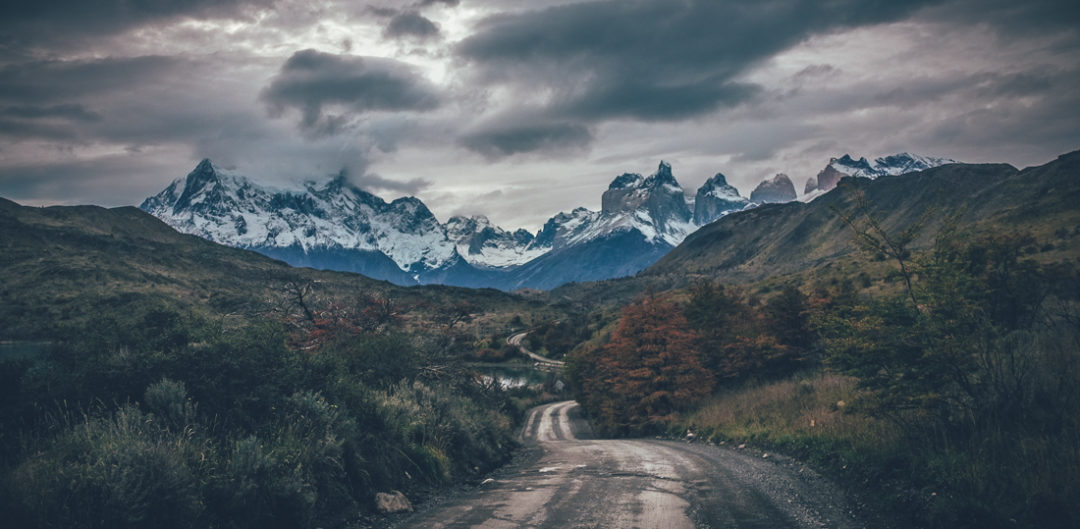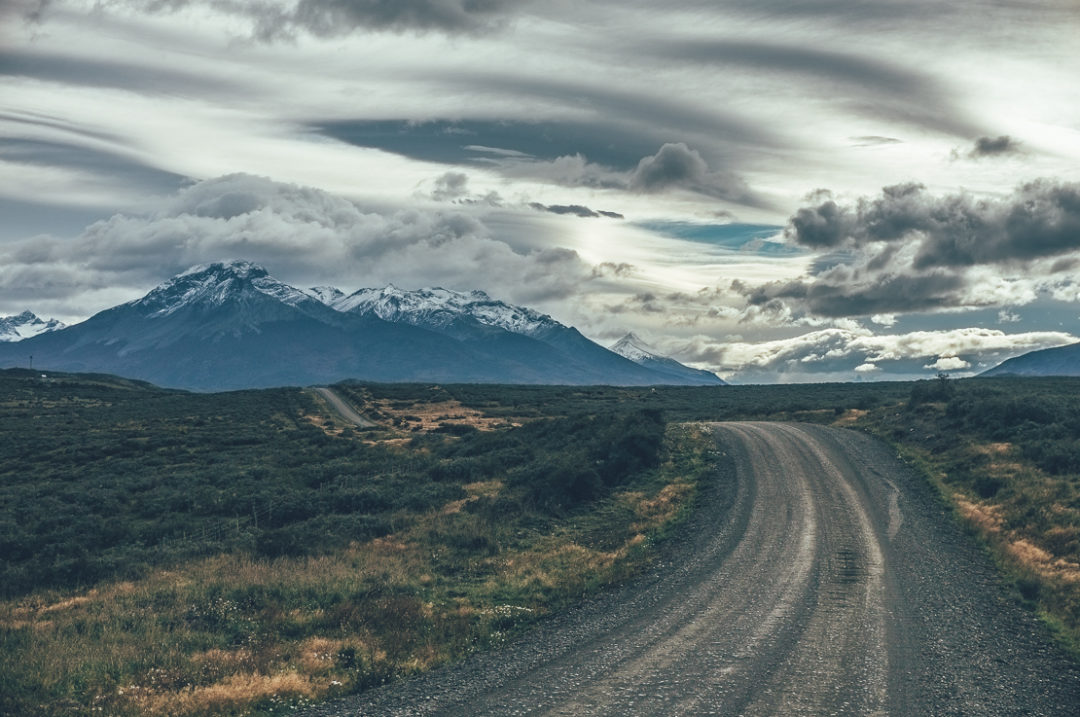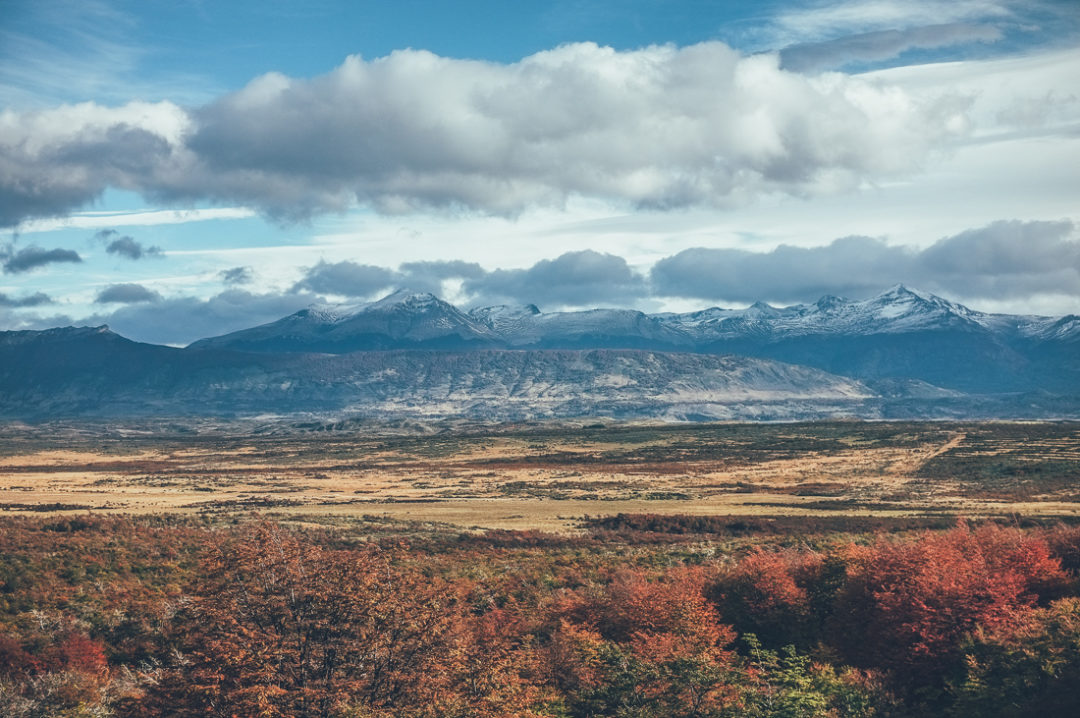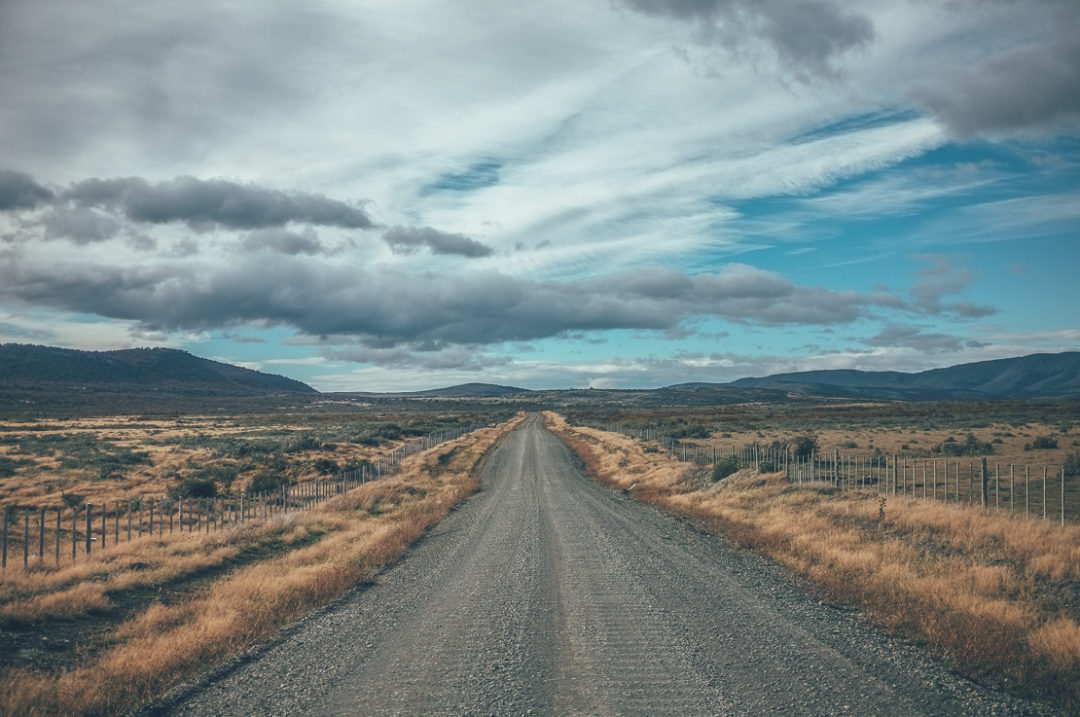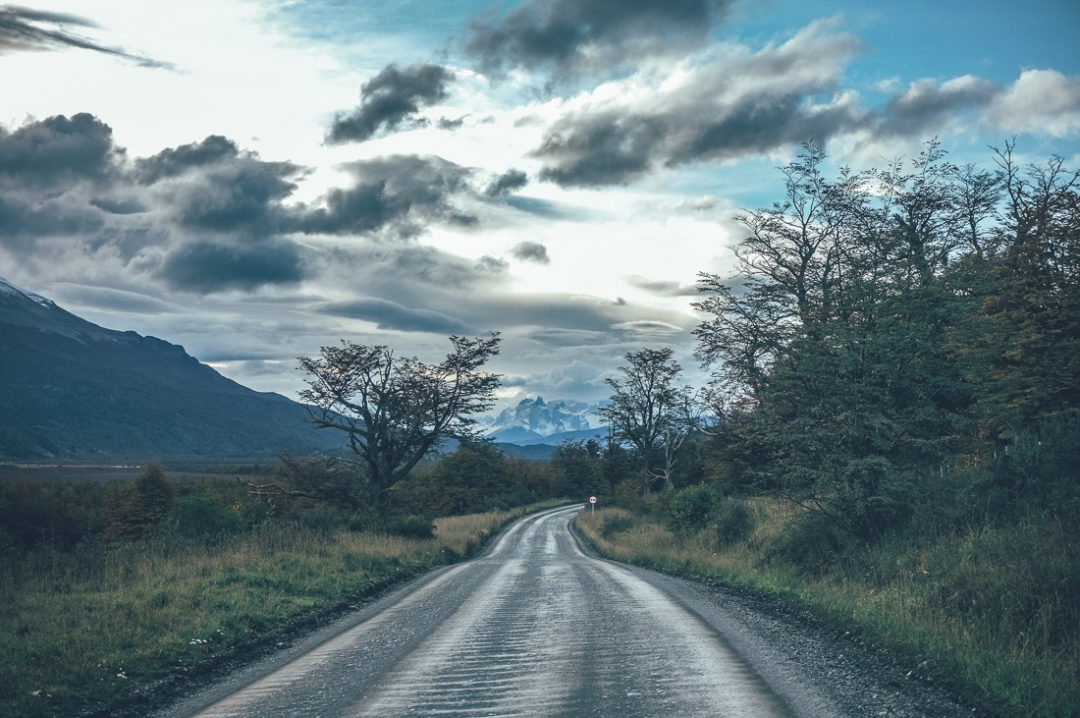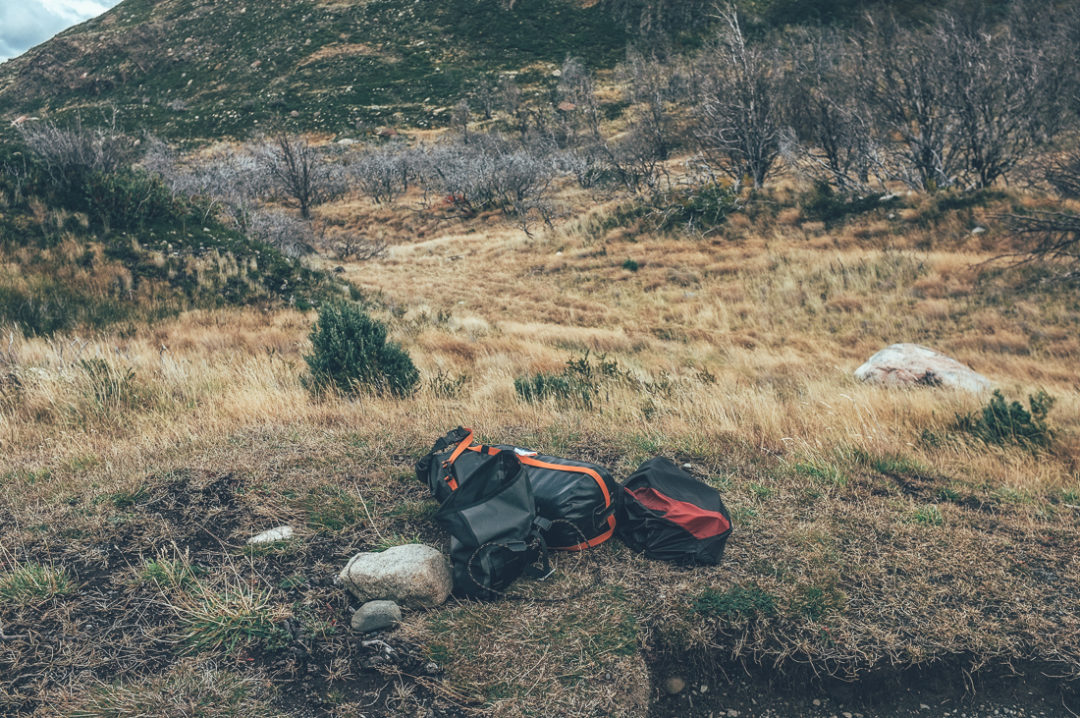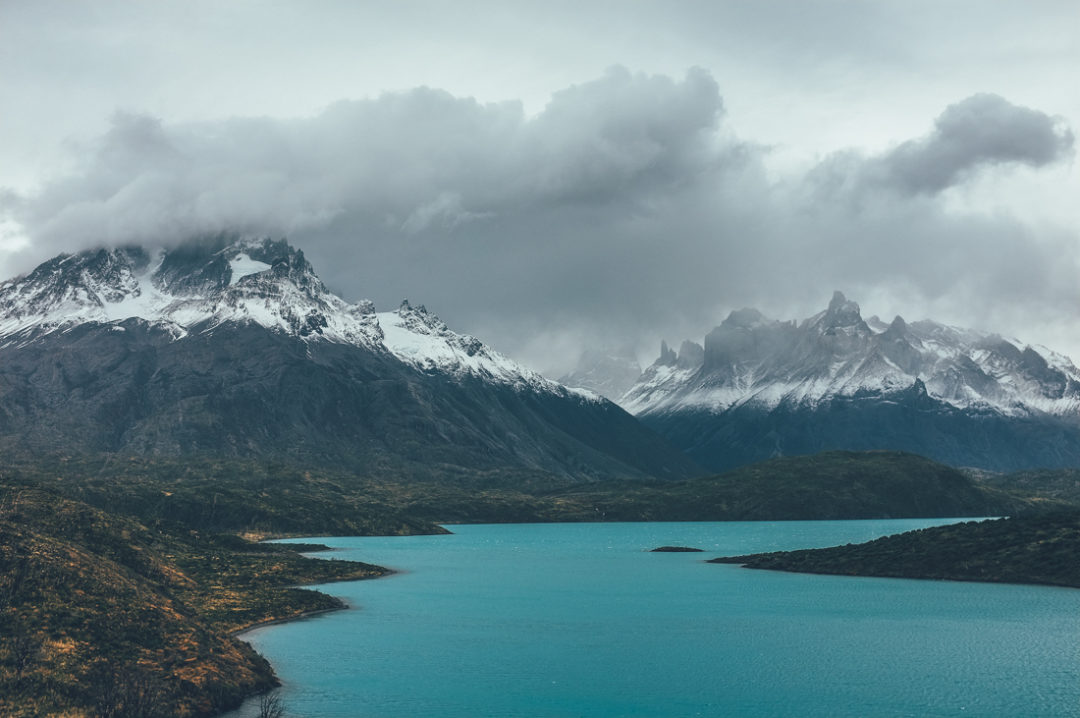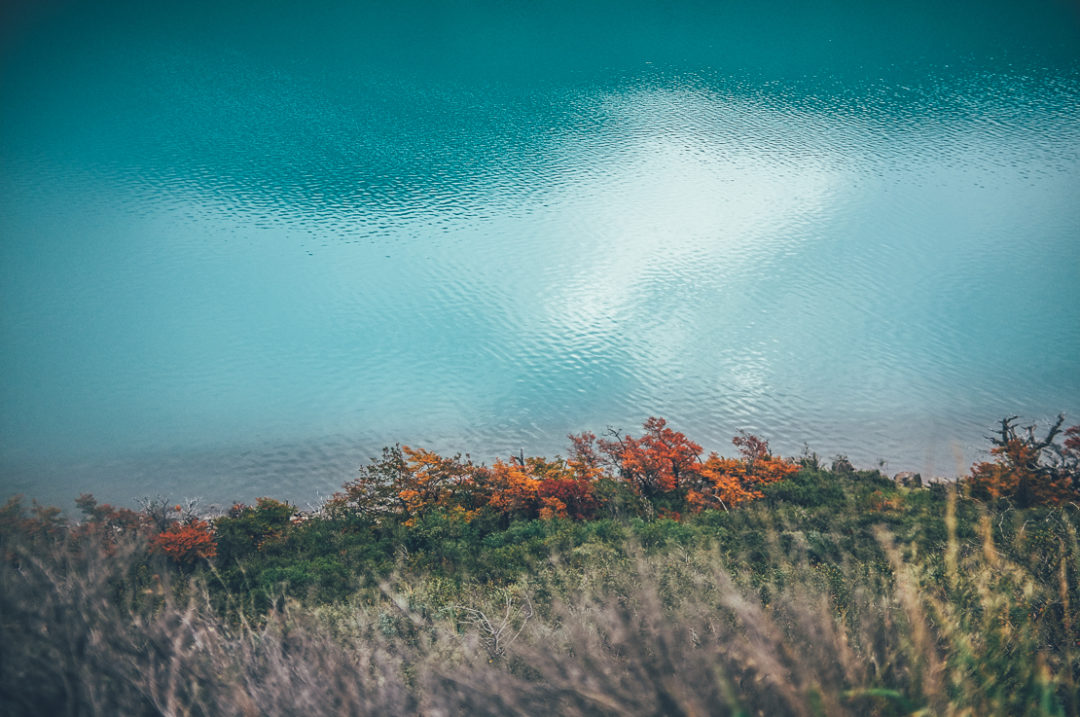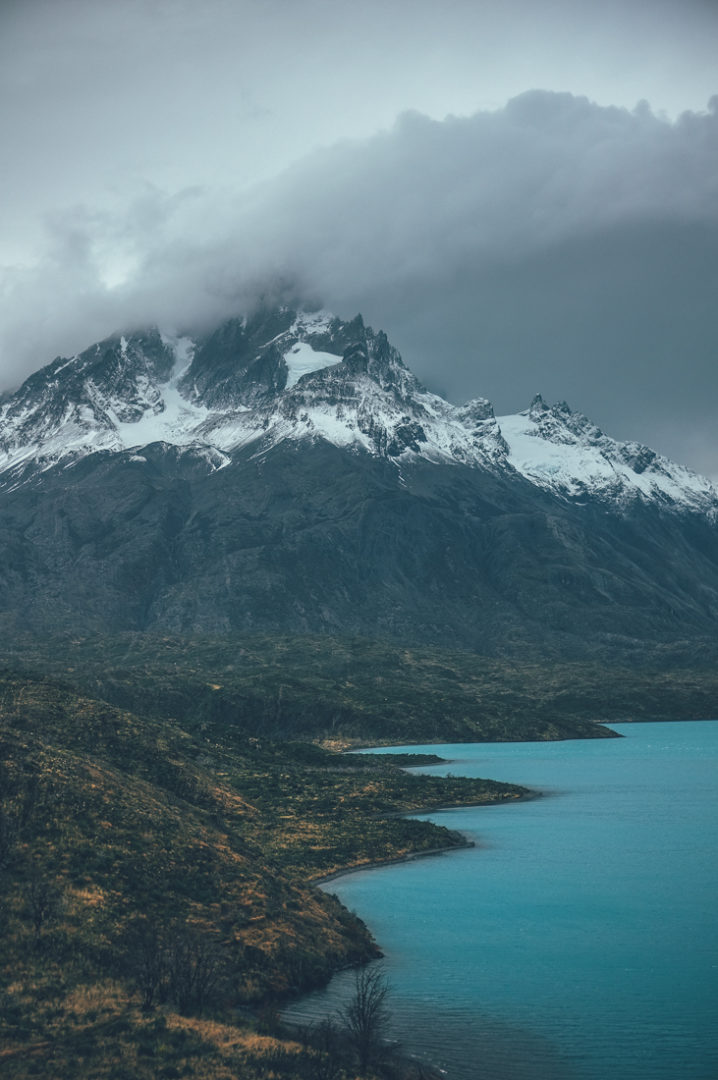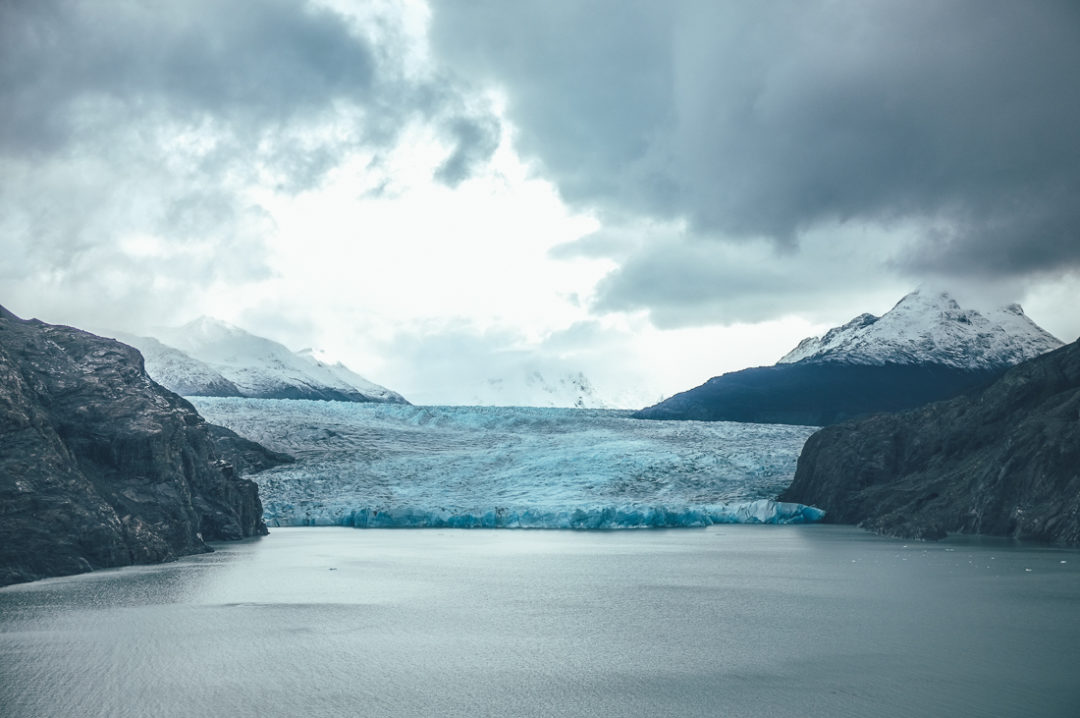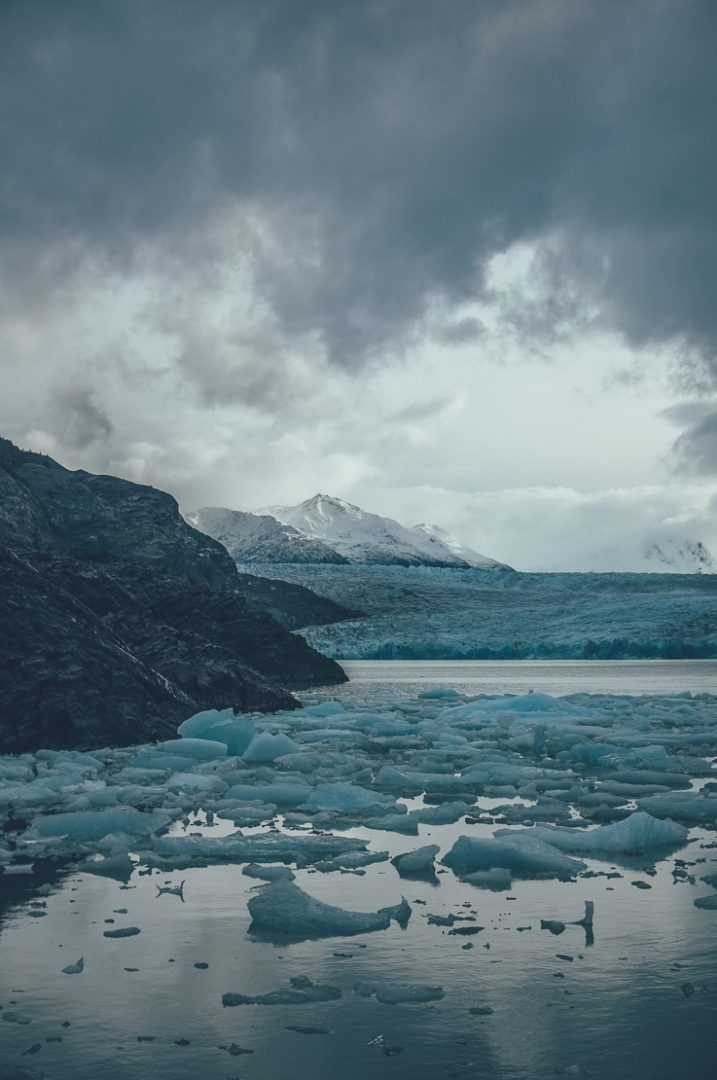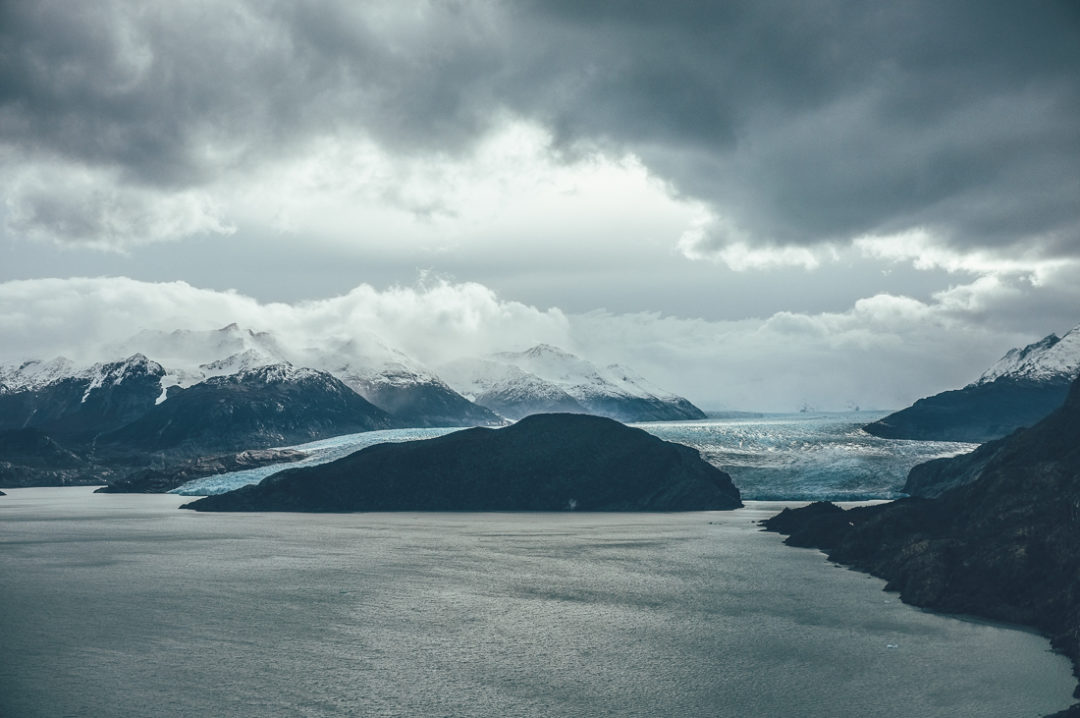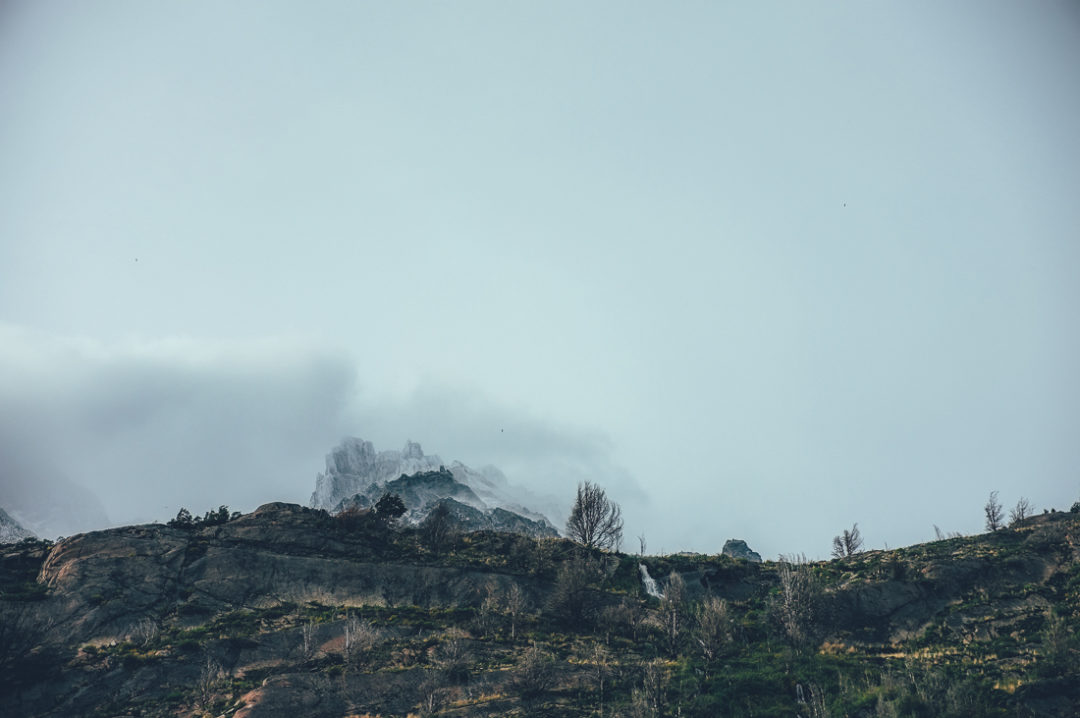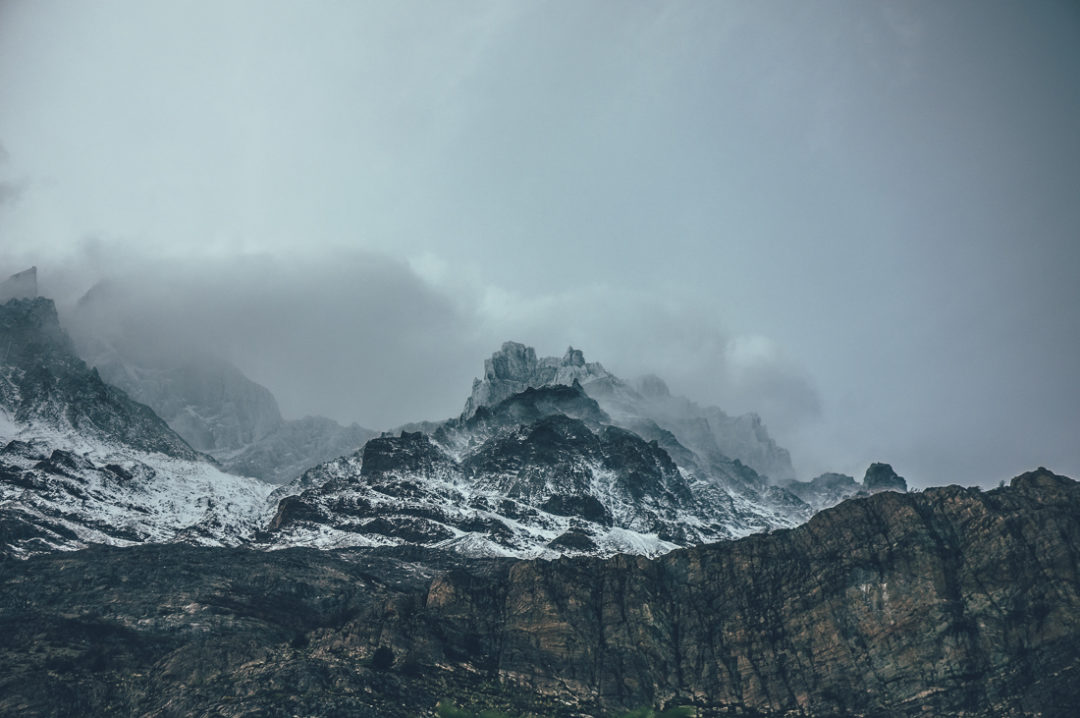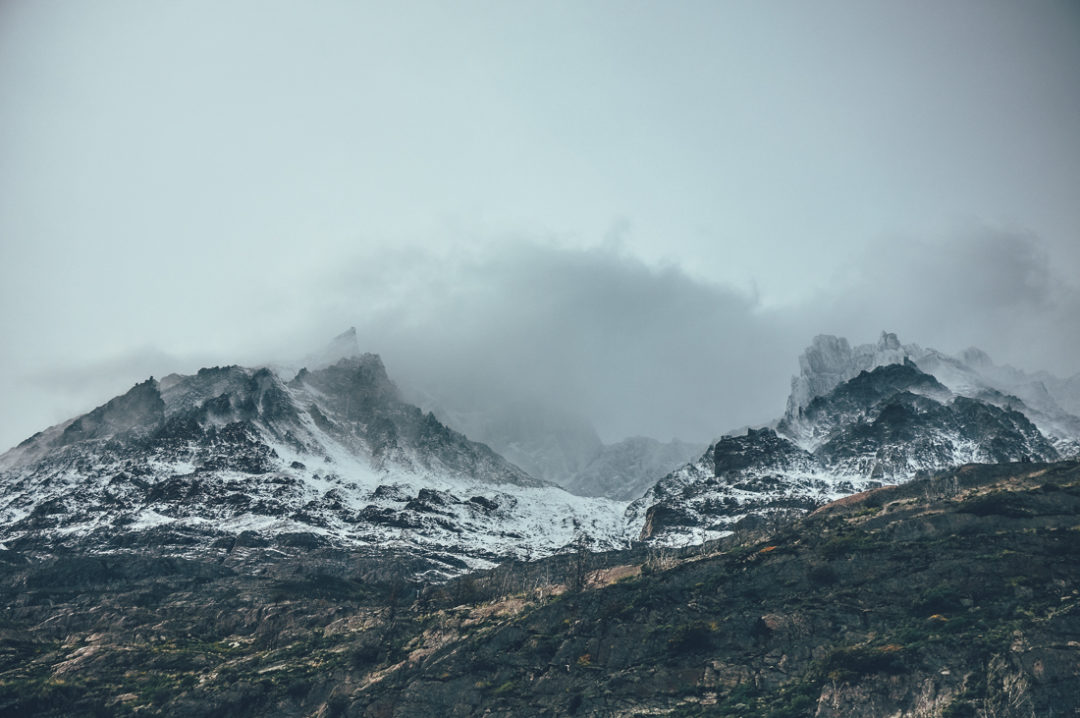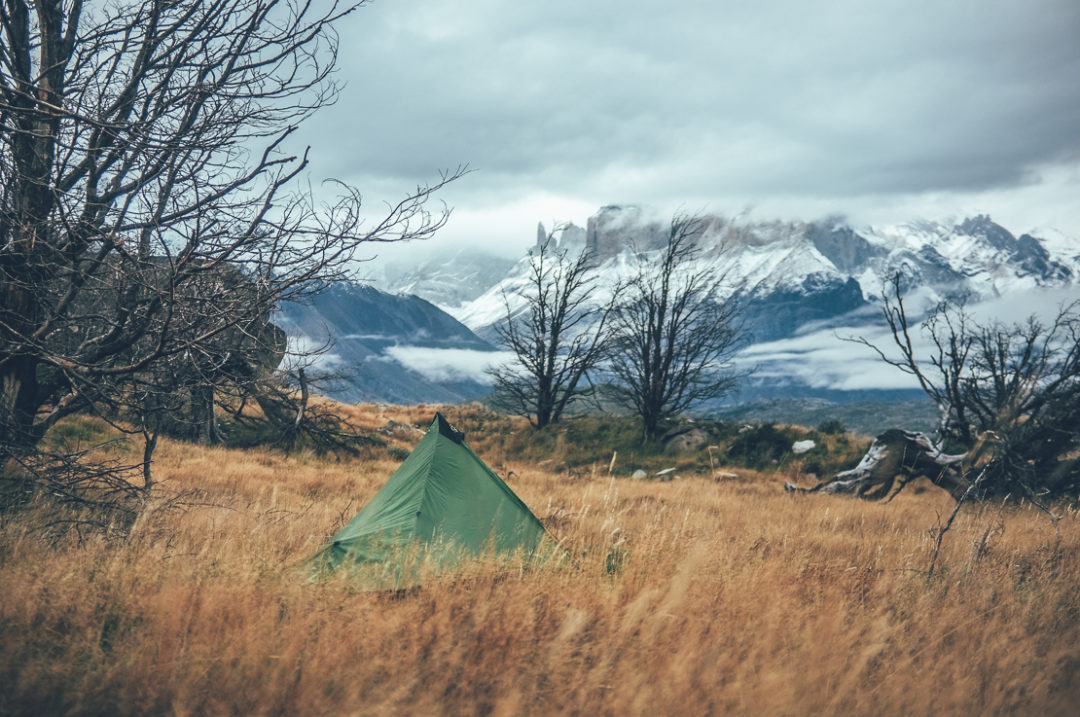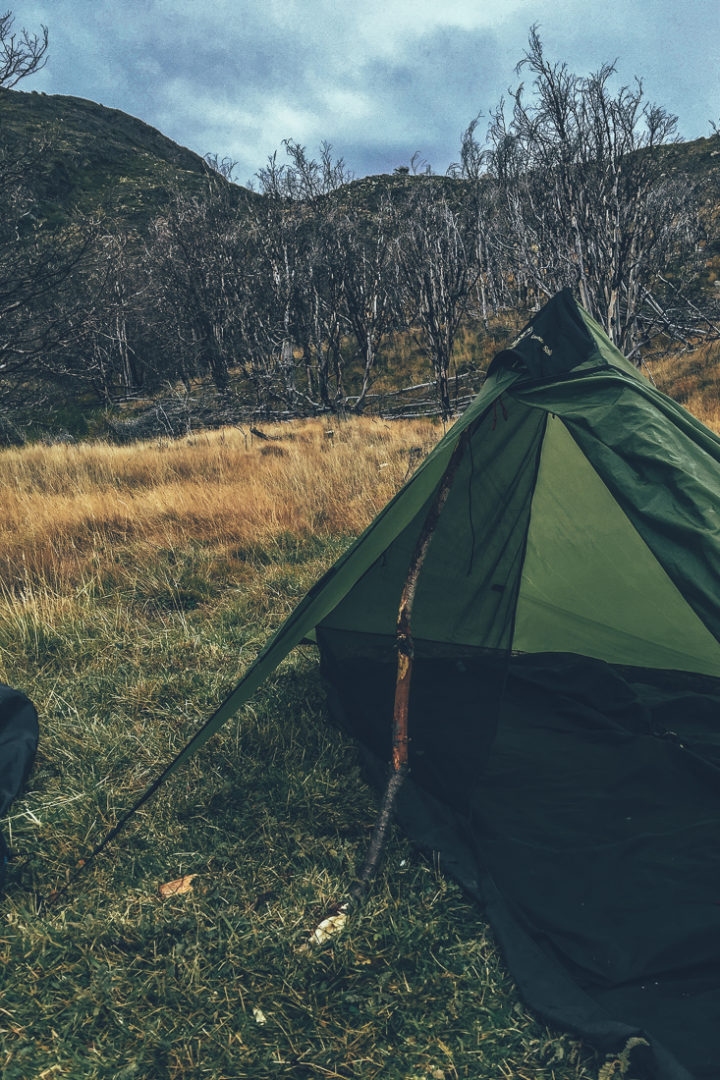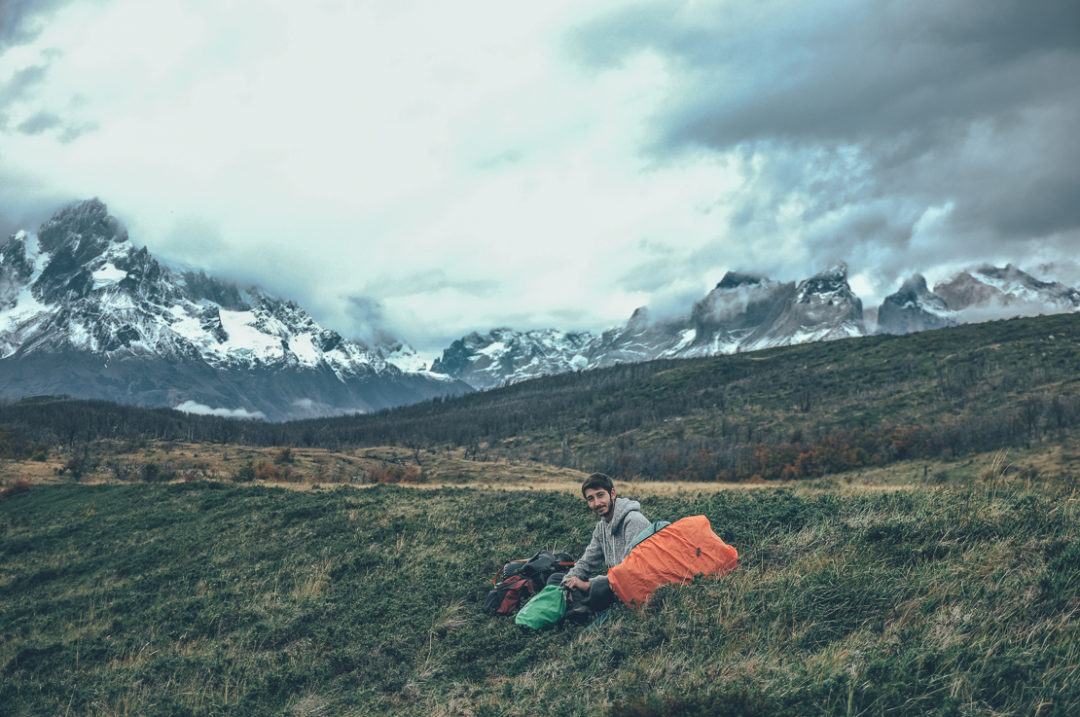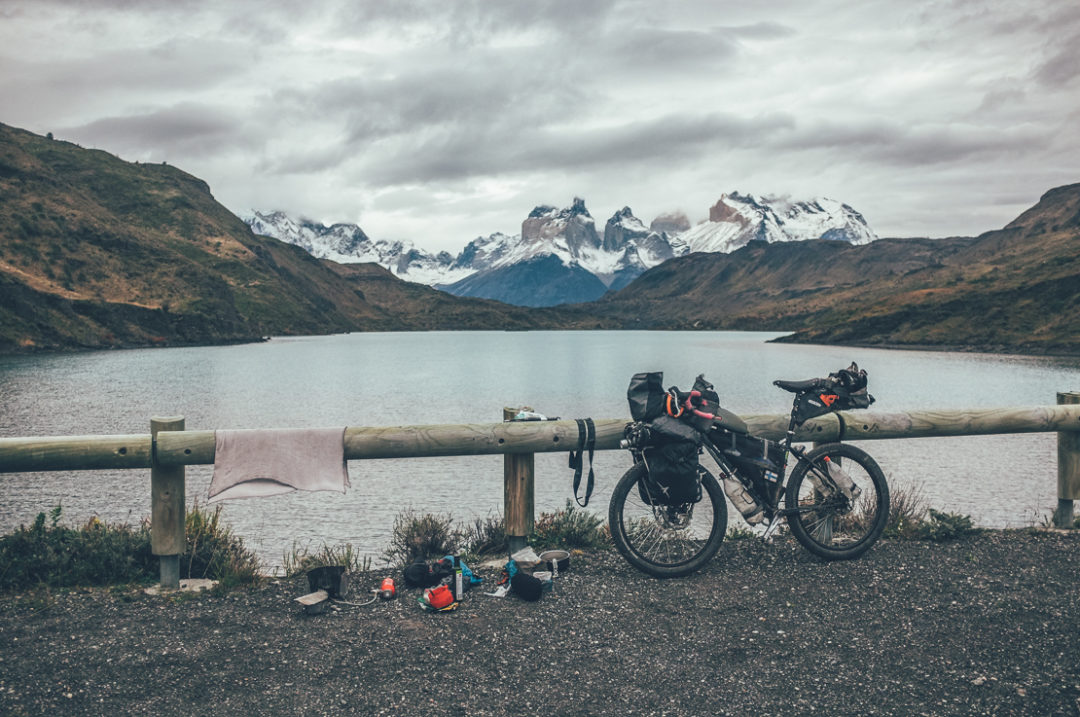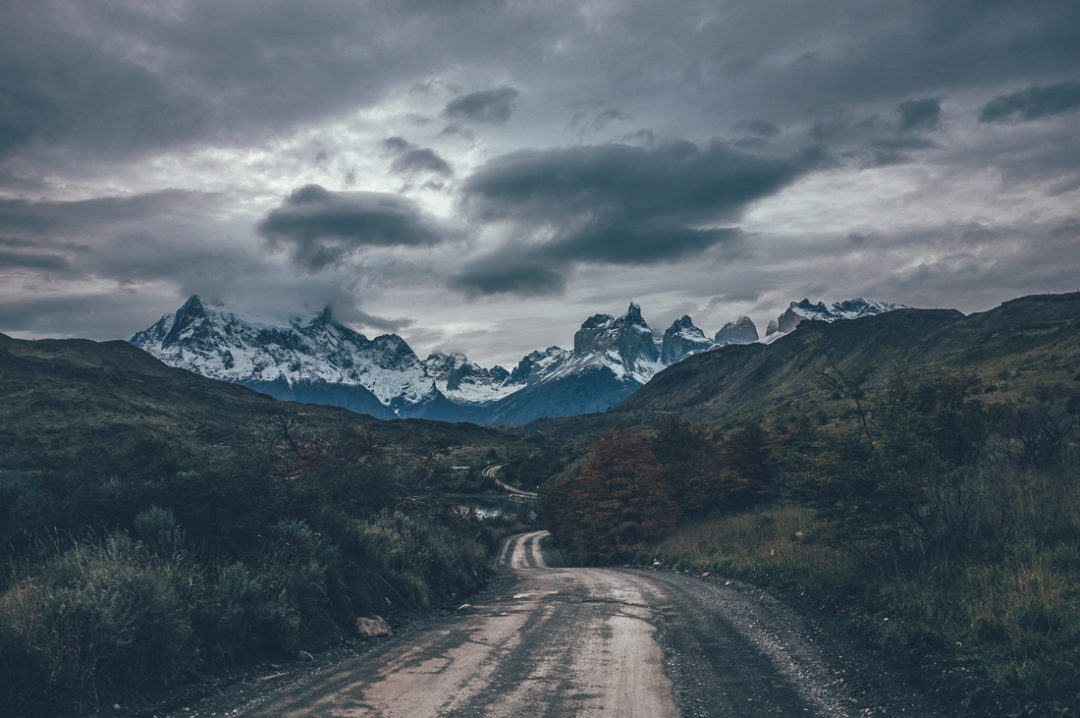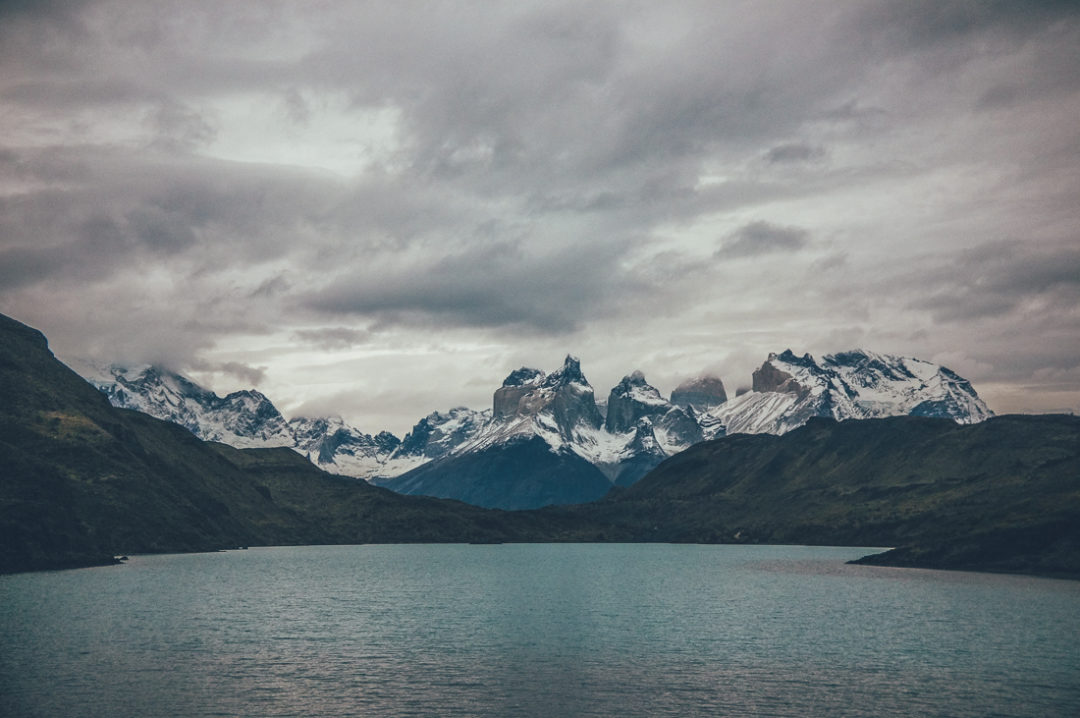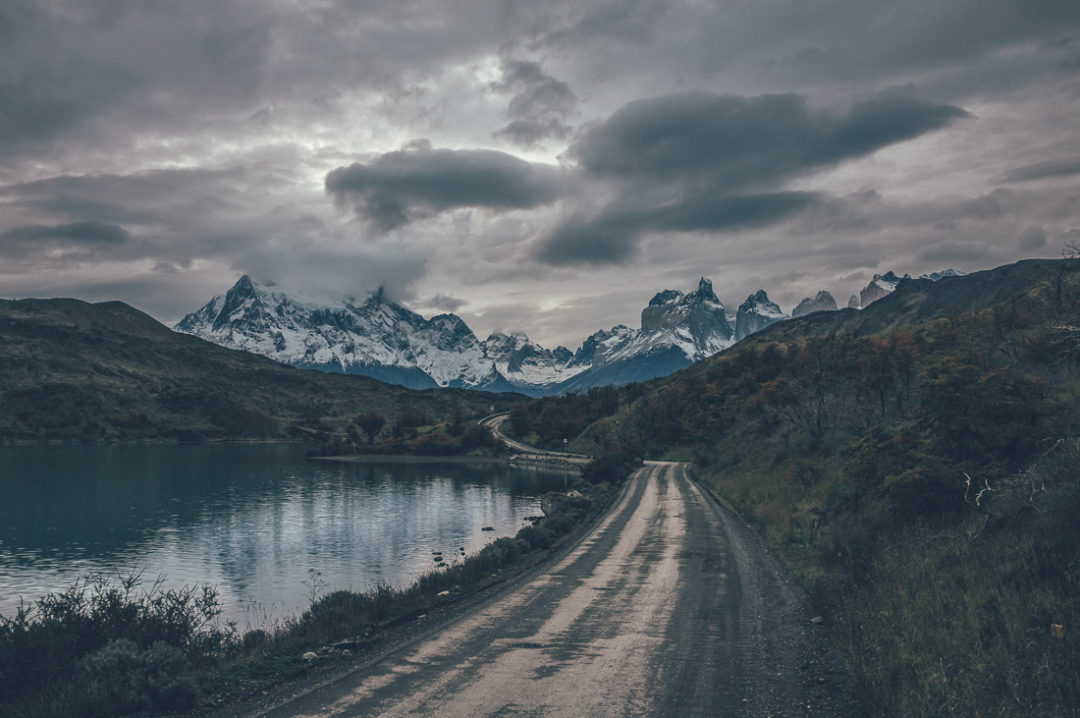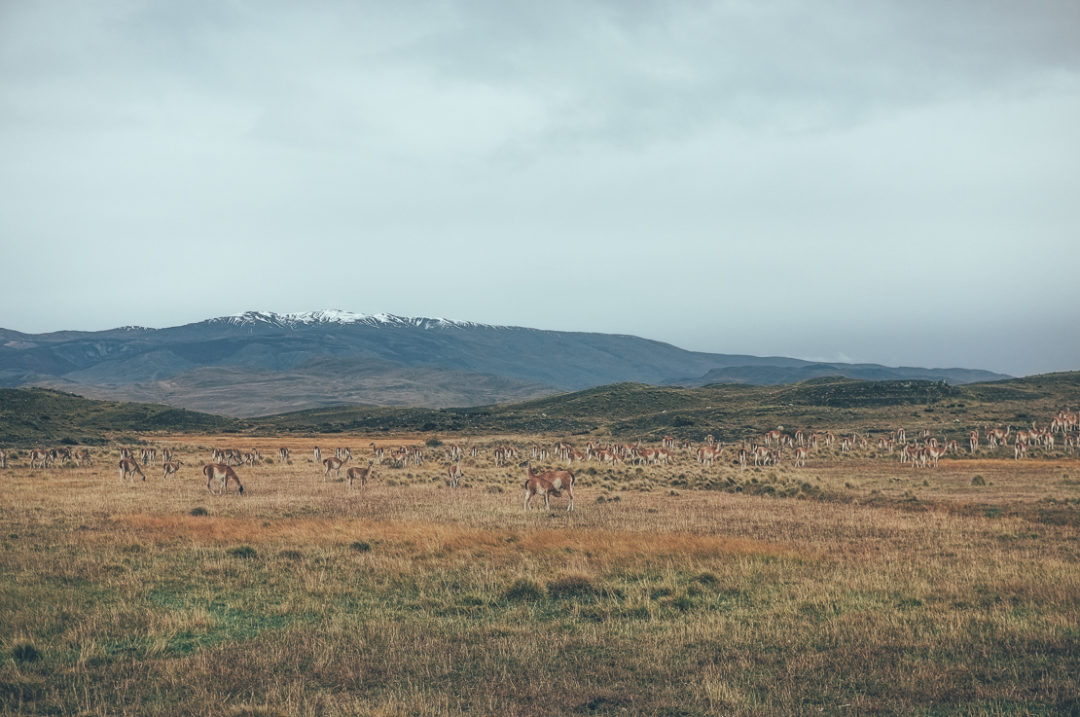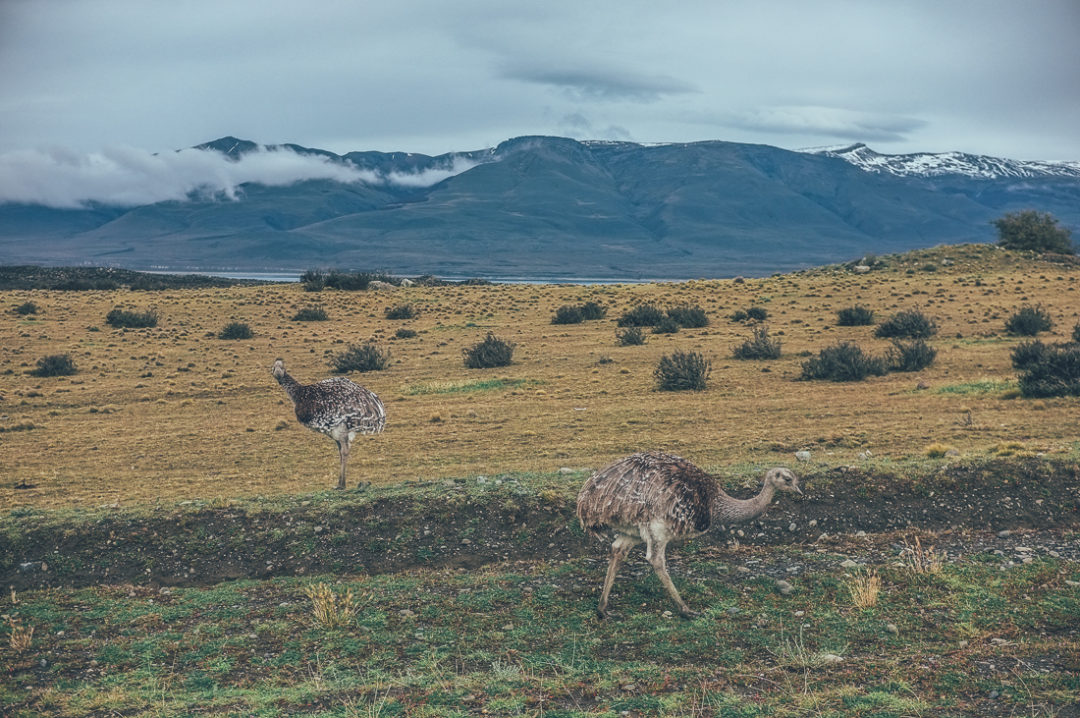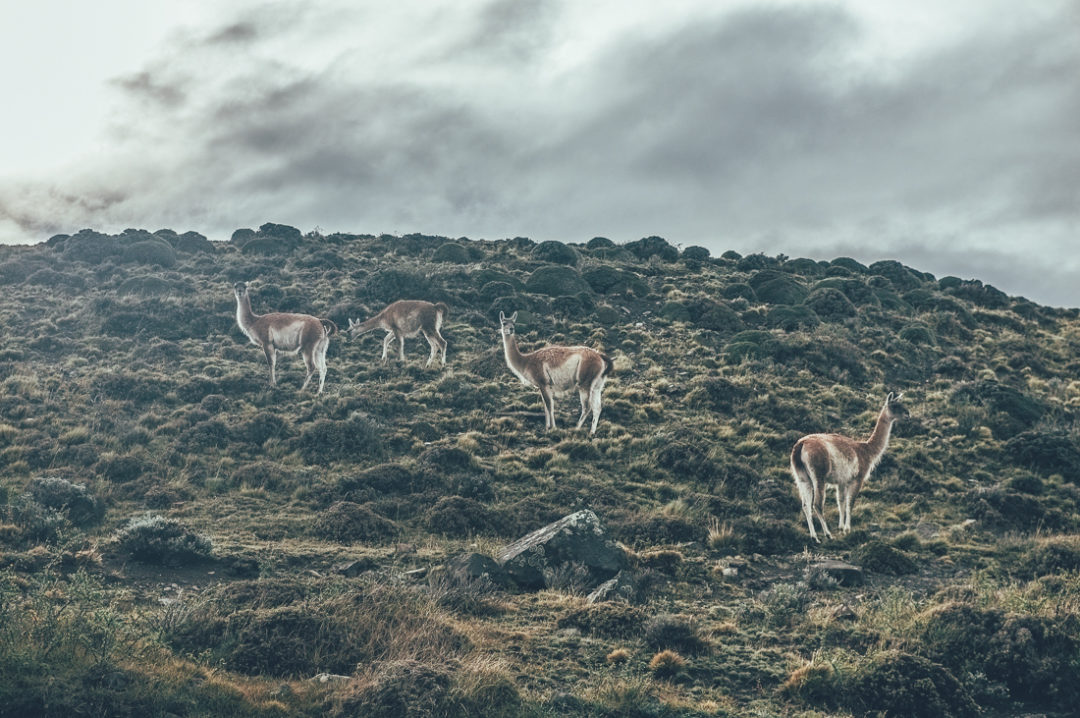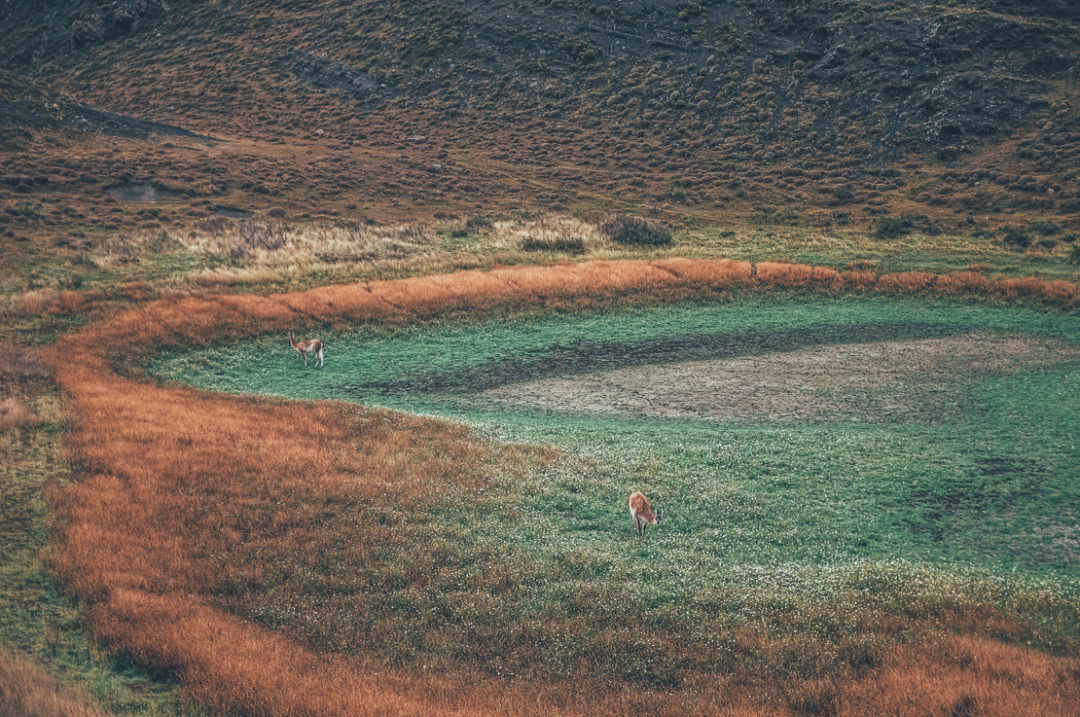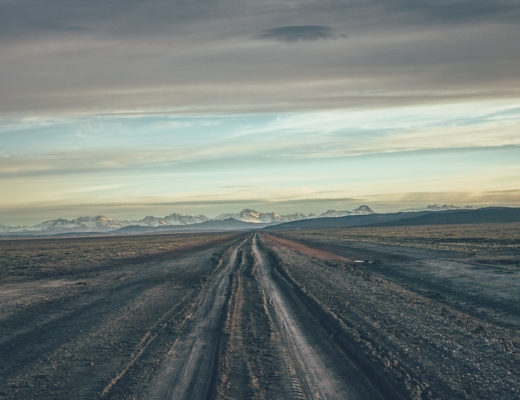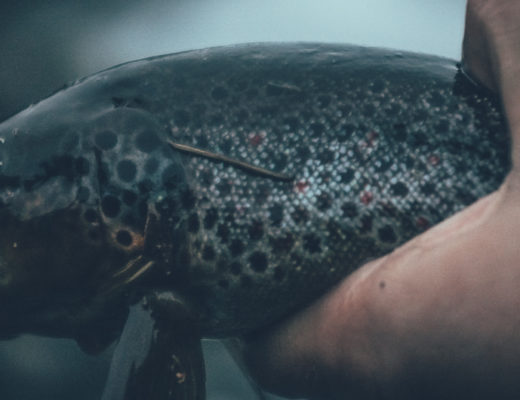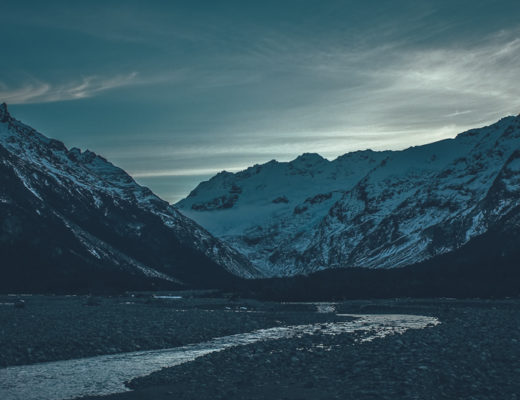After a series of disappointments from Punta Arenas to Puerto Natales, I was back on peaceful side roads. The next destination the National Park of Torres del Paine. Some cyclists call the park the ‘Torres del Pain in the ass’, as visiting the park easily and affordably by bicycle is challenging. My plan was to skip the famous W trek and spend in the park minimum amount of time and money possible. Eventually I spent there four nights, instead of just riding through in one day.
First half a day I followed the coast line of the Pacific Ocean with views to much higher mountains than I had seen in Patagonia so far since my start from Ushuaia. Fjord next to me ended to an mountain face which climbed from sea steeply to over 1500 metres. A Caravan with European registration plates stopped next to me and I was asked in German if this was the correct road to the National Park of Torres del Paine. I smiled and replied in English that, yes it is, knowing that this is not the road they should be in, but which would eventually lead them to the right direction. I also found comical the fact, that I was again assumed to be German by Germans, based on my hair and eye colour. After a while I joined the main road leading to the national park as well and started the approach toward the verticals pillars in the horizon.
The road from Puerto Natales to the National Park of Torres del Paine was beautiful in Patagonian autumn. A glimpse of Los Torres in the horizon made me confident that the detour to the park would be worth it.
My strategy for the Torres del Paine had been: entry in the morning, out in the evening. I had made peace with the fact that I cannot see everything on this tour and had decided to skip the famous W trek. It was also a question of money. Wild camping in the park is strictly forbidden and campsites and guesthouses were pricy to my budget. Logistics in and out to the trek were complicated as well. The trek has a shape of W, like the name indicates, so it would be tricky to come back to the starting point, without paying my multiple days budget for a short boat ride. Additionally to all this, all the nights in the national park, even in the campsites needs to be booked in advance, something that turns off many biketourers. Me included. It would have been simply impossible for me to say when I would enter the park weeks, or even months, earlier. Therefore, my plan was to just ride through the park and skip the world famous trek, spending in the park the shortest amount of time possible.
I camped by Lago Porteño in the end of my first cycling day from Puerto Natales, a couple of hours cycling distance from the park entrance. During the night wind picked up and rain started. I was camping on sand at the beach, having luckily full wind cover from the vicious west winds. In the morning the wind has got even stronger; cycling head wind would be nearly impossible. Therefore, I decided to spend at Lago Porteño another night as well, hoping the winds to calm down for the following day. On calmer moments schools of trout swam along the shoreline eating from surface and chasing something under water. Despite the rain and wind I could not resist rigging my fly fishing rod, but just ended up getting my fly to all the other places where the school of trout was feasting. I gave up wet and cold and continued watching the trouts by a campfire.
The following day wind had calmed down a little and there was rain only occasionally. It was time to enter the park. On the entrance I met an Argentinian cyclist, who told me that there is apparently nobody in the entrance building, so I could just ride in to the park and avoid the hefty entrance fee. Suits me! I rode to the entrance, and true, no cars parked at the building and the building was dark. I kept riding into the park, happy to know that I just saved money worth of one weeks food on the road. 5km after the entrance I stopped to prepare a lunch, but soon remembered that using a camping stove was allowed only in the official campsites, inside the kitchen buildings. Scared of getting caught using my stove, I finished my cooking under a bridge, invisible from passing cars. While cooking a gale force wind picked up again and rain got heavier. I waited under the bridge the wind to calm down listening the ‘RISK!’ podcast and time flew by. I ended up spending the night under the bridge, sleeping on a 50cm wide concrete structure. For the night I anchored everything with big rocks, but still had lost a sock and a plastic bag in the morning, which I though found from the nearby field on a search mission.
Approaching the park, I had seen a couple of times something really turquoise in the horizon. Studying my map I identified the spot to be the Grey Glacier, located in the end of the W trek. Grey Glacier is part the southern continental ice mass, Campo de Hielo Sur, the biggest continental glacier system on earth after the ice mass of Antarctica. Its length equals a straight distance from Helsinki to Stockholm, or from London to Paris. This would be my best change to see a glimpse of it in Patagonia. Though, I did not have a backpack and did not really know how to get there with my bike. It would also be better to get out of the park as soon as possible, as I did not have the entrance ticket, sleeping would be expensive and I would not be permitted to prepare food outside official campsites. Still the urge to see the glacier got unbearable by the morning I woke up under the bridge.
I packed my bike and started to cycle on a hiking trail toward the glacier, which I guessed would be not allowed either. The plan? Ride my bike on the single track as far as I could and then continue to the glacier by walking, without reservations in any camping sites. I must have been the sketchiest visitor in the park ever. Despite the strong head wind the first 10 km were an easy to ride, but when the hills started I was soon have to hide my bike and continue by foot. I took with me a 20L dry bag with my tent, mattress and sleeping bag in it, my handle bar bag with valuables, and a small light backpack with two days food and a water bladder. With some ropes and straps I used on my bike I could just about carry the three bags comfortably.
Quickly improvised trekking setup: sleeping equipment in a dry bag, carried with a strap on back, handlebar bag with valuables and simple two days food in a light small backpack. Total weight max 5kg, any more weight would have possibly been uncomfortable.
There were nobody on the trail, which I found weird, despite it was off season and there were not many people in the park in general. Why nobody is on this trail? When I reached the Campamento Paine Grande at sunset, I got some answers: the trails is closed due to high number of Pumas in that area. The bloody pumas. At the campamento, hungry and not excited to eat polenta (sort of corn porridge) with cold water I decided buy an expensive pizza from the restaurant (yes, a restaurant!) of the camp site, before continuing into the night toward the Glacier Grey. At least I would be bringing some money into the park.
Approaching the W trek from south. The color of Lago Pahoé was stunning, Los Torres somewhere in the clouds in the background.
After walking 3 hours with torch light I reached Camping Grey, the official camping of Glacier Grey. At 10pm I entered into the main building of the camping site and walked to the check-in desk. ‘Qisiera un notche en camping, por favor?’ I mumbled with my broken Spanish and a got surprised look as an response. ‘Do you have an reservation?’, asked the boy behind the table, guessing I would be more fluent in English than in Spanish. ‘A reservation?’ I knew they would not send me away, and there was only one other tent in the camping area, so I got checked in, paid the camping fee, enjoyed a hot shower and joined a couple of another trekkers in the common area around a fire place. Totally worth of 5000 Chilean pesos (8 euro).
The next morning I hiked to see the Glacier Grey a kilometre north of the camping and wondered a couple of hours on the cliff imagining how it would be like to do walk on ice for more than 300km, from the Lago Grey to the most northern tip of the ice mass. I had hoped to see some falling pillars of ice at the glacier, but soon realised that this is a very slowly moving glacier. It would not be like its cousin on the Argentinian side, Perito Moreno, which moves meters a day and offers apparently spectacular show 24 hours a day.
Glaciers Grey and Lago Grey, Parque de Torres del Paine, Chile
Snowline was at the Glacier Lake at at 300 meters, just a couple of meters higher than the Campamento Grey.
I started the walk back to my bike after mid day, which meant walking in the dark again. The distance was 20km, which had taken me 8 hours including the breaks the day before. I reached the most southern end of Lago Pahoé at sunset at 6pm and kept going for a while, before remembering the reason why I should not be on the trail. The pumas. The National park safety instructions advice to hike with somebody to reduce the risk of a puma attack. Similarly hiking in dusk and at night is not advised. Allowed or not, I would camp in the first possible spot, it was easy to decide. I camped on a small beautiful dry meadow, the towers in the background. I had forgotten to take my tent pole when packed for the hike two days earlier, so used a tree branch as a replacement. In the morning I met a French guy and we walked the last 10km to my bike together.
Walking south from the W trail.
Back on the road again I immediately got a puncture. Bloody thorns of Patagonia! Since leaving Punta Arenas, I have managed to slice both of my tires by glass on road in Ushuaia and Punta Arenas, which meant no more tubeless with this set of tires. On thorny ground this is very unpleasant and I have had a couple of flats a week. As a surprise, one of my tubes showed to be unfixable in the low temperatures. Rubber was simply too hard make a patch to stick, even though I tried to warm up the tube and patch in my hands. I bought the tube from Thailand, in the area where temperatures rarely drop below 20C. They must be selling different compound tubes there. A fresh spare tube to use and I was on the road again.
Back on the road again I got a flat tyre the second time within a couple of days, but luckily had at least a beautiful spot to fix it.
I think I could have made it out from the park on the same day, but the stunning road forced me to stop every 100 metres to take a picture. The road through the Torres del Paine National park was one of the most scenic roads I have ridden during my previous 33 000km through the half of the world. I ended up wild camping one more time in the park, this time behind a hill a couple hundred metres from the road.
One of the most scenic roads I have ridden during my previous 33 000km through the half of the world. The main road through the national park of Torres del Paine is a gem, especially off-season when traffic is less and Los Torres is covered by snow.
On my last, fifth day in the park I took a closed road out from the park, which guaranteed no traffic at all and a lot of wild life, though only Guanacos and Rheas. I descended from the National Park all the way to Cerro Castillo, a village next to Argentinian border. This village is somewhat famous among cyclists for its five start bus stop with showers, wifi, leather sofas and a fireplace. Though it was all locked down when I reached it in the dark. Dissapointed, I camped behind it. It gave barely one star wind protection. At least there was a shop open in the village and got a bottle of Argentinian sider to settle the disappointment.
Guanacos and Lesser Rheas do not much care about cyclists in the National park of Torres del Paine. Pictures taken with a 50mm lens, the closer Rhea was just 5m from me.
The Route
Nothing special here, except maybe the first bit north from Puerto Natales along the Pacific coast. The gravel road through the National Park of Torres del Paine is occasionally in a funky condition, but most of the cyclists seem to ride it with what ever tires they happen to have anyway. I have heard from other cyclists that the traffic could be dangerous on the road across the park when the tourist season is on, off season traffic was not a problem at all. I suppose it is good to remind that cycling outside roads as well as wild camping and use of stove outside designated areas is prohibited in the national park.

